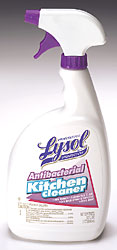I got one of those tennis-racket-shaped zapper things from Amy, but I sorta broke it, being aggressive like one would with a flexible flyswatter.
A Subway restaurant in Franklin, Indiana is receiving a lot of attention online after an employee allegedly “zapped” bugs in the sandwich-making area, and a customer caught the entire incident on video.
 Justin Clemons posted the video to Facebook on Monday evening. He said he took his children out for dinner to the Subway located at 2120 East King Street after a golf match.
Justin Clemons posted the video to Facebook on Monday evening. He said he took his children out for dinner to the Subway located at 2120 East King Street after a golf match.
“So I sit down and start eating and my back is faced to (the employees) and I start hearing all the zapping sounds,” Clemons said. “I couldn’t figure out what it was until my 13 year old said, “I’m pretty sure they are zapping the bugs that are above it.’”
Clemons then turned around and witnessed what his son thought was happening, really was.
“The first reaction was I cannot believe this is actually happening,” he said. “My second one is if I don’t record this I don’t think anyone in their right mind will believe this is happening right now.”
So Clemons turned on his phone and started recording the incident.
“I was pretty much in shock and so were the kids,” Clemons said. ““It was directly over the food itself… Nothing was closed that I could see and he was just immediately taking the racket right over the food and zapping them.”
A Subway spokesman released a cookie-cutter statement Tuesday night:
Food safety is our top priority. All Subway restaurants are individually owned and operated. As soon as the restaurant owner was made aware of the situation, he immediately took action by closing his restaurant and discarding all open products. He has contracted a professional cleaning service to ensure that the restaurant is in top working order.
Subway also commented on the video Clemons posted to Facebook, apologizing for the incident.
“We truly regret you had this experience Justin, and we are looking into this right now,” the company wrote. “Food safety is our top priority, and we are working with the franchisee to address immediately. If you could send us a Private Facebook message with your contact information, we’d like to reach out to you personally, or if you prefer you can link here http://bit.ly/1XrM5lE for our Care Team. Thank you Justin.”

 In fall 2000, I contacted Procter & Gamble to ask for the data substantiating the claim that Fit would eliminate 99.9 per cent of bacteria on fresh produce,
In fall 2000, I contacted Procter & Gamble to ask for the data substantiating the claim that Fit would eliminate 99.9 per cent of bacteria on fresh produce, To cite a 99.9% fatality rate, manufacturers don’t have to kill 99.9% of all known bugs. Regulations don’t require them to disclose which bugs they exterminate, just that the products are effective against a representative sample of microbes. For instance, many products can’t kill Clostridium difficile, a gastrointestinal scourge, or the hepatitis A virus, which inflames the liver. Yet by killing other, more common bugs, they can claim 99.9% effectiveness.
To cite a 99.9% fatality rate, manufacturers don’t have to kill 99.9% of all known bugs. Regulations don’t require them to disclose which bugs they exterminate, just that the products are effective against a representative sample of microbes. For instance, many products can’t kill Clostridium difficile, a gastrointestinal scourge, or the hepatitis A virus, which inflames the liver. Yet by killing other, more common bugs, they can claim 99.9% effectiveness..jpg) In Dubai, it will only get you a 25 per cent discount.
In Dubai, it will only get you a 25 per cent discount.